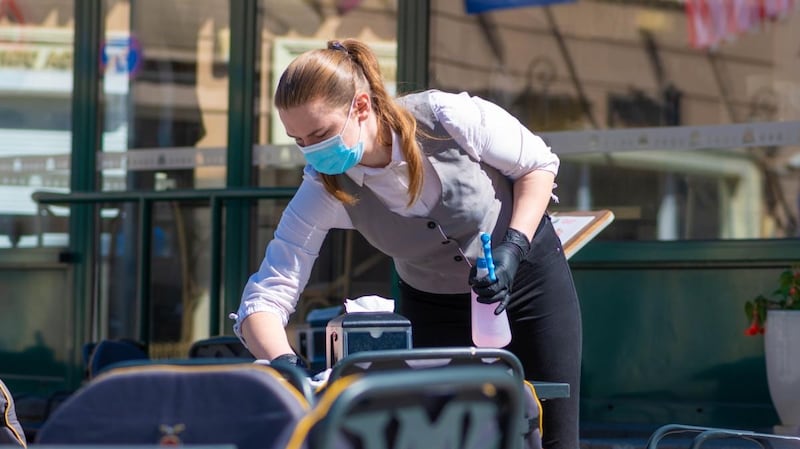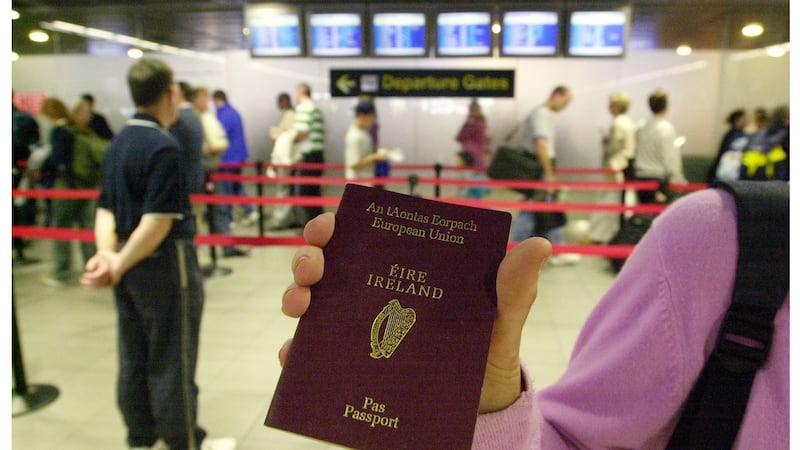Moving to Level 5 restrictions is the “only opportunity” to get Covid “back under control” and keep schools open, the Government has been told.
A letter sent on Sunday by the National Public Health Emergency Team (NPHET) to Minister for Health Stephen Donnelly, seen by The Irish Times, warns of a “significant and deteriorating” epidemiological situation.
It says the State needs to move to Level 5 in the Covid-19 roadmap as measures currently in place are not sufficiently controlling the disease as evidenced by the “high volume of community transmission”.
Hospital Report

It recommends that Level 5 measures be introduced from midnight on Monday for four weeks. It says NPHET is sensitive to the impact on businesses, individuals and families but that the action is “the only opportunity to get this disease back under control while keeping schools open”.
It says a graduated approach “will not have sufficient or timely impact on the trajectory and scale of the disease”, and would ultimately result in Level 5 measures being put in place, whereas an immediate enactment of the harshest measures will prevent deaths, protect vulnerable people and enable schools to remain open.
“The proposed measures will only be effective if there is broad societal buy-in and adherence over the coming four week period,” it warns.
“NPHET advises that it is vital to do everything in our power now to arrest the current trajectory nationally and suppress the virus back down to a low level of transmission in advance of the winter months.”
Government members have privately expressed surprise at the extent of NPHET's latest advice and the manner in which it emerged. Chief medical officer and NPHET member Dr Tony Holohan is meeting the leaders of Fianna Fáil, Fine Gael and the Green Party on Monday to discuss the recommendations.

The advice and tone of the letter is in contrast to the last communication to Government. While that letter, sent on October 1st, noted “growing concern with the continuing deterioration in the situation nationally,” it said that further measures beyond the extension of Level 2 measures were not being recommended at that time.
“As part of its deliberations, the NPHET considered whether the situation warranted an escalation of restrictive measures to Level 3 at a national level. On balance, the NPHET agreed that while the current trajectory of the disease is very concerning, the current epidemiological data does not strongly support a move to Level 3 nationally at this time,” the October 1st letter from deputy chief medical officer Ronan Glynn states.
Although Sunday night’s letter is stark, some Government sources are of the view that it does not adequately make the case for a move to Level 5, particularly in light of last Thursday’s letter.
Community transmission
The letter states that the measures currently in place are not sufficiently controlling the disease, as evidenced by “high volume of community transmission and sustained increases across key indicators” since Thursday.
Metrics cited in include the total number of cases increasing by 6 per cent in the last week of September, increases in the five, seven and 14 day incidence rates of the disease, an increase in the proportion of positive tests, and increases in the level of infection among people aged over 65.
It also points to 31 open outbreaks in nursing homes, seven of which have been reported in the last week. There are 25 open outbreaks among vulnerable communities, with 10 in direct provision centres, seven in homeless services, and seven in Traveller communities.
NPHET wrote that admissions to critical care services have grown to an average of two per day, with 243 out of 281 critical care beds now occupied.
It said that, if current trends continue, some 1,600 to 2,300 cases per day will be being reported by Novemver 7th, with 43 people per day being admitted to hospital by that date.
The letter also raises concerns about the level of the disease among people aged 15-24, which accounts for one in every four cases. The seven-day incidence rate in this group is 119 per 100,000 people. It points out that in the week ending September 27th, there was an average of eight admissions per day to hospital. In the week ending October 3rd, that had grown to an average of 12 per day, with 17 cases in the 24 hours preceding the letter being sent.
NPHET has been notified of 34 deaths that occurred in September, the letter points out, compared to four in August.
“In the light of the above, NPHET believes that proactive and robust measures must now be taken such that very significant suppression of the disease with a reproduction number well below 1.0 is achieved,” the letter states.
It calls for an emphasis on communications which “provide clarity on the measures in place”. It says there should be an “immediate activation” by State agencies to ensure necessary services are in areas such as physical and mental health and social care.
It says that “NPHET appreciates how difficult it will be for everyone to return to this level of restrictions, but it is confident that people across Ireland can once again meet this challenge with determination and unity of purpose”.
The letter, while not mentioning powers available to the Garda explicitly, advises that “powers available under public health and other legislation are fully and visibly utilised to support and reinforce adherence to public health measures”.
It further advises that the Government should “develop and implement solutions aimed at increasing awareness of and compliance with public health advice among young people”.
Amid ongoing concern and criticism of turnaround times in the State’s testing and tracing system, the letter says that NPHET will give further consideration in the days and weeks ahead to several measures. This includes “further enhancing our public health surveillance and control capacity, particularly testing, contact tracing and case and outbreak management”. It also will be considering testing, surveillance and other protective measures for healthcare workers.
The team also recommended close engagement with authorities in the North “in relation to the strategic approach” to the disease.
















